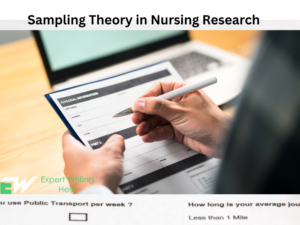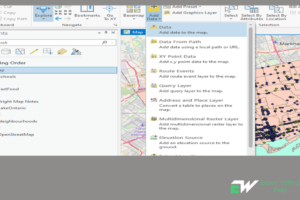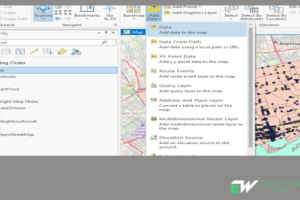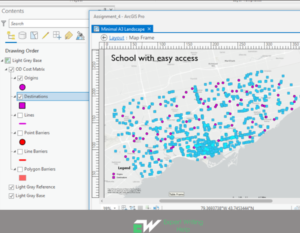Most Commonly Used Quality Improvement Models for DNP Projects and Nursing Scholarly Projects
Healthcare students choose a quality improvement methodology depending on what and why they’re looking to improve scholarly processes. Today’s article dwells on 13+ most commonly used quality improvement models in DNP projects and other nursing scholarly projects. For each, I’ll detail the respective measurement and evaluation tools.
The 4 Core Quality Improvement Metrics
There are four metrics that measure the effectiveness of changes leading to quality improvement, namely:
- The Structure (infrastructure, facilities, and physical equipment).
- Process of improvement / activities.
- Measurable and predicted Outcomes
- Balance: negative, unintentional impacts on another part of the nursing project.
What are the 4 P’s of Quality Improvement?
An effective assessment framework must holistically address the four dimensions of quality (the 4 Ps) which are:
- The final Product, which is the nursing scholarly paper.
- The Processes used to develop the above product.
- The People (project team) involved, And
- The Propellers (enablers) of high quality products and processes.
The Best Approach to Nursing Quality Improvement (QI) Processes
A good QI framework is consistent, provides common thinking, and offers a universal language for the project team. According to ResearchGate.net® the following stepwise approach yields the best quality improvement results for healthcare projects.
A Six-Step Quality Improvement Process Workflow
- Identify the area of the process to improve. Discuss and understand the bundle element in the context of your units.
- Gather data on current process performance. What do you want to achieve? How much? By when?
- Analyze data and sort out root causes of problems.
- An approval of the quality improvement framework bound by rigorous data analysis and empirical findings.
- Design and build improved process solutions. How will you measure the benefits? (Driver diagram / action plans / success communication strategies).
- Pilot the improved process. Experiment! Be creative and change ideas using the Test and Learn
The Six Pillars of Nursing Project Quality Improvement
Every nursing scholarly project stands on all of these six pillars.
- Avoids harm and is safe for all participants.
- Is effective, evidence based, and appropriate.
- Respectful and responsive to individual needs (people-centered).
- An effective QI process is timely.
- Avoids waste, i.e it is highly efficient.
- Provides an equal chance (equitable) at similar outcomes regardless of socioeconomic status or geographic location of the participants.
Importance of Quality Improvement Frameworks to Nursing Scholarly Projects
You may ask yourself why nursing students use quality improvement models for their scholarly projects. Here are two strong reasons.
Reason #1: QI Frameworks Help the Nursing Project Team to Focus
One, QI models provide healthcare researchers with a step-by-step guide to identify focus areas. It therefore helps the team to design improvement ideas and to schedule their implementation. A QI framework adjusts the project, keeping it within the local context and health community systems.
Reason #2: A Functional Framework Standardizes Nursing Research Procedures
Quality improvement seeks to standardize processes and the entire nursing project structure. In return, this reduces results variation. It’s a path to predictable research findings, thereby improving outcomes for patients, healthcare systems, and whole medical institutions.
13+ Most Commonly Used Quality Improvement Models for DNP Projects & other Nursing Scholarly Projects in 2025
Before you start a project, choose a guiding improvement framework(s) that provides unbiased feedback on your progress. The 14 Quality Improvement Models for DNP Projects below are the most commonly used for nursing scholarly projects. Check out Number 9!
1. Business Process Management (BPM)
The latter-day Business Process Management model feeds on:
- The 1970’s Total Quality Management (TQM) philosophy which largely remains relevant to this day.
- Continuous Quality Improvement (CQI) alongside the Six Sigma model that successfully merges QI processes with statistical quality control techniques.
The original BPM model builds on three traditions – Quality Control, IT, and Management – to simplify industrial engineering. The healthcare version uses CQI & TQM functions for non-clinical management at the organizational level.
Important Note:
Only some limited, unsustainable, small-scale improvements in clinical areas use BPM methodologies.
2. Donabedian’s Framework for Quality Improvement
Donabedian (1966) believes that the three components of measurement breed an additional ingredient: balancing measures. According to this philosophy, the structure affects the processes. In turn, these two influence the model’s outcome measures.
3. Kaizen’s QI Model in Healthcare Scholarly Projects
In healthcare, Kaizen belongs to Lean quality improvement philosophies, which emphasize small, continuous improvements throughout the project. Each small change brings a minor improvement. Cumulatively, these micro improvements coalesce into significant efficiency, safety, quality, and workplace culture milestones.
4. The Fishbone Framework
The Fishbone framework runs on a cause analysis tenet. It is the spinal column of “the seven finest quality improvement tools” in nursing research projects.
The five-prong fishbone diagram – also known as an Ishikawa Diagram – identifies varying possible causes for a single effect / problem. In a brainstorming session, this is a perfect tool to sort random ideas into meaningful categories.
The Fishbone methodology separates the project problem from provisions, procedures, patrons, and the measurement environment. Through this tool, nursing project teams answer the 4 fundamental Ws of QI research: What, Why, When, and Where to improve.
5. The 5S Methodology of Quality Improvement
The 5S system improves a healthcare scholarly project’s efficiency by eliminating waste. To maintain an organized work environment, nursing researchers should:
- Earmark and Sort out areas that need change.
- Set the change process in order.
- Polish and Shine the transformation.
- Standardize improvement procedures.
- Sustain the improvements during the scholarly project.
6. Total Quality Management Strategy
In medical studies, TQM ensures the project team works towards a common goal of improving research procedures and the final report. The increased need to raise research quality stems from faculty regulations, nursing academia demands, and trending hospital management initiatives.
Application of the SERVQUAL technique in TQM frameworks help nursing researchers to satisfy both the project assessors and end consumers of the scholarly report.
7. The Famous Six Sigma Model
Also known as the “Zero Defects” framework, Six Sigma expects a 99.99966% error-free success in all nursing scholarly projects. The research defect levels stay sub-3.4 defects per million opportunities (DPMO).
In medical research, Six Sigma blends well with other QI frameworks to help you meet strict faculty research requirements. Through this model, hospitals can send out nurses to study their niche products and services with an aim to improve or sustain them.
Important Alert!
The DMADV (Define, Measure, Analyze, Design, Verify) strategy isn’t applicable in nursing scholarly projects. Use the “Define, Measure, Analyze, Improve, Control” (DMAIC) approach to improve existing processes and procedures instead.
8. The PDCA Quality Improvement Framework
PDCA (Plan, Do, Check, Act) cycle is a four-step model for carrying out nursing scholarly project changes. The framework is a go-to technique in the initial planning stages of your research.
The cyclic nature of the PDCA model perfectly complements the Kaizen framework.
9. The Lean QI Model in Healthcare Research
Lean quality improvement strategy improves both the quality and safety of a healthcare project by standardizing work practices and driving out avoidable waste (“muda” in Japanese).
The Lean model identifies 8 types of waste, namely:
- Transportation
- Motion
- Over processing
- Inventory
- Waiting
- Overproduction
- Skills
- Defects
There are 8 Lean tools to help you identify & eliminate waste in nursing project processes and procedures, namely:
- The A3 Report
- 5S Technique
- Bottleneck Analysis
- Value Stream Mapping (VSM) Approach
- Jidoka Method
- Kaizen Strategy
- Kanban Technique
- Poka-Yoke
10. Rapid Cycle Improvement (RCI) Model in Nursing Research
True to its name, Rapid-Cycle Improvement performs rapid, multiple PDCA cycles for a small target group in a 90-day initiative. Rather than the standard 8 – 12 months, you plan, execute, measure, and entrench transformations in less than three months.
According to the Robert Wood Johnson Foundation, RCI is a “quality improvement method that identifies, implements and measures changes made to improve a process or a system.”
Very Important!
Nursing researchers, be alert for “scope creep”. To overcome this malady, conduct multiple cycles of PDCA whilst improving processes.
11. Model for Improvement Framework
This one comes in two doses. Phase One sets the project aims, establishes measures, and selects an appropriate intervention. The second phase runs these interventions in real-life research settings using the PDSA cycle (See Number 12 below).
- Phase One Activities
Ask yourself this: What changes will equal quality improvement? What do I want to accomplish? How long until I know whether a transition means an improvement?
The most scholarly way to answer these questions in a nursing project is through the sequence below.
- Set Specific Goals
Use the SMART goal format to set the aims. Each objective should be Specific, Measurable, Achievable, Relevant, and Time-bound.
- Establish Measures
As a critical part of testing and implementing changes, measures inform the team if a change is effective. Measurement tells nursing researchers whether the transformation translates to an improvement in quality.
- Select an Intervention
First discover the root cause of your problem by conducting a Root Cause Analysis (RCA).
The project team can agree to use any tool(s) below for an RCA.
- Cause and Effect Diagrams (See The Fishbone Framework above)
- Driver Diagrams
- Failure Modes and Effects Analysis (FMEA)
- Pareto Charts.
- Phase Two Events
This is where the PDSA cycle comes in, something I’ll discuss immediately below.
12. The PDSA Approach to Nursing Scholarly Projects
Before you carry through the interventions in your nursing scholarly project, test small process changes using a Plan-Do-Study-Act (PDSA) cycle.
Plan. Start by identifying stakeholders. Next, build your project team. The Institute for Healthcare Improvement (IHI) framework recommends a representative from the three levels of expertise: system leadership, technical experts, and day-to-day leaders. Decide who’s going to do what, when, and the resources they’ll need.
Do it! Cautiously set the interventions in motion on a small scale. Collect and document critical improvement data.
Study the data for results after implementation. Compare the findings to your initial predictions using a graph or chart such as a control chart, histogram, run chart, or a scatter diagram.
Act on what you’ve learned. Did it work? Adopt the change. Not quite to your expectations? Adapt by starting another PDSA cycle. Abandon the darn thing if there’s no observable improvement, or the outcomes are negative.
13. The Hybrid Lean Six Sigma QI Framework
For optimal results, use a hybrid of Lean and Six Sigma frameworks in nursing scholarly projects. Although there are core differences, the two models have complementary underlying philosophies.
Lean Six Sigma targets both waste and defects in all components of your nursing project!
Another Important Note…
Any tool in Model for Improvement, Six Sigma, and Lean frameworks apply. The best way is to use a balanced mixture!
14. Institute for Healthcare Improvement’s Model
Improvement combines two popular QI models: Total Quality Management (TQM) and Rapid-Cycle Improvement (RCI)
Standard Definition of Common Quality Improvement Tools
Histogram: The most common graphical representation for showing frequency distributions or how often each different value occurs in a set of data.
Pareto Chart: A bar graph that shows which factors are more significant than others.
Scatter Diagram: A graph with pairs of numerical data (one variable on each axis) that looks for a relationship between the two data sets.
Driver Diagram: A visual display of a team’s theory of what contributes to the achievement of a nursing scholarly project’s aims.
SWOT Analysis: An analysis tool that evaluates the Strength, Weaknesses, Opportunity, and Time.
Get DNP Project Assistance for Best Quality Improvement Framework
Do you confuse between theoretical framework and quality improvement framework? then you need to hire expert DNP project writer to write your QI framework for your DNP project. Expert Writing Help is a specialist DNP project writing service that has extensive experience spanning over 13 years assisting DNP students in US and Canadian nursing schools write excellent quality improvement projects. Our writers are have extensively used the following QI models in their projects that include: fishbone framework, PDSA approach, PDCA quality improvement framework and six sigma approach.
Talk to us today for assistance
Related articles
 As an environmental science student, you’re not just earning a degree; you’re stepping into a world of opportunities to make a tangible impact. Your
As an environmental science student, you’re not just earning a degree; you’re stepping into a world of opportunities to make a tangible impact. Your 

 Community health nursing is one of the most picked nursing specialties mainly for its wide-ranging job opportunities in a variety of healthcare or community settings. A community health nurse can be employed to work in hospitals, nursing homes, clinics, correctional facilities, public health departments, county and state departments of health, schools, or occupational health programs among other facilities in the community. Community health nurses may also travel to serve communities in remote locations solo or as part of a multidisciplinary team.
Community health nursing is one of the most picked nursing specialties mainly for its wide-ranging job opportunities in a variety of healthcare or community settings. A community health nurse can be employed to work in hospitals, nursing homes, clinics, correctional facilities, public health departments, county and state departments of health, schools, or occupational health programs among other facilities in the community. Community health nurses may also travel to serve communities in remote locations solo or as part of a multidisciplinary team.
 Sampling theory in nursing research refers to the principles and approaches used to choose a representative sample of participants from a larger population for a research study. The sampling theory is essential in nursing research since it enables researchers to draw conclusions about a population based on the data collected from a smaller group of people.
Sampling theory in nursing research refers to the principles and approaches used to choose a representative sample of participants from a larger population for a research study. The sampling theory is essential in nursing research since it enables researchers to draw conclusions about a population based on the data collected from a smaller group of people.
 Okay, let’s get real for a second; You might be sitting there, scratching your head, thinking, “Why do I even need to write an
Okay, let’s get real for a second; You might be sitting there, scratching your head, thinking, “Why do I even need to write an 








